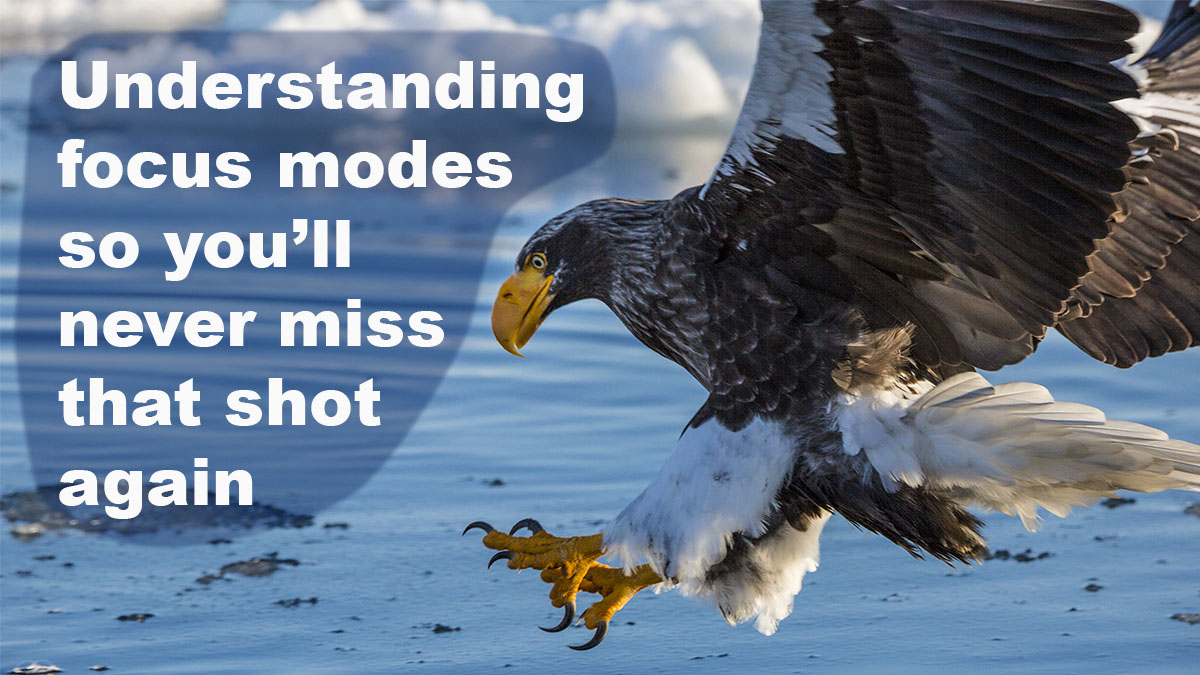May 5, 2021
Focus Modes so you’ll never miss a shot
Using the proper focus modes with last week’s tips on drive modes will ensure that you’ll never miss a shot

Last week we looked at the various drive modes that you’ll find on your camera. This week we are going to look at the focus modes. When you combine together the way your camera focuses and drives the shutter, you can almost guarantee never missing a shot. Regardless of the make and model of your DSLR or mirrorless interchangeable lens camera, there will be three (and more than likely a fourth) focus modes available. In addition, there will be various options determining how many focus points the modes will use. Let’s look at the various focus modes work, and then we’ll tie it up with last week’s blog to look at the best combinations in different situations.
Manual Focus
The first of the focus modes we’ll look at is the one you’ll probably use the least! In the old days of photography, there was no such thing as auto-focus. The photographer had to use their eyesight and the manual focus ring to get their images sharp (or more often than not, not). Occasionally, I like to use manual focus when shooting landscapes. I use the live view on the back of the camera and zoom in to a 10x magnification on the position I want to be the focal point. Using this method, I can ensure that the focal point is precisely where I need it.
Another good use of Manual Focus is to shoot static objects in low-light conditions, and auto-focus is struggling to work on your lens. Use a light to gain focus using an auto-focus mode and then switch to manual focus. Doing this will stop the lens from trying to hunt for focus after each shot. Remember, though, that if you change your position forwards and backward of the subject, you will have to re-focus.
Single auto-focus
We are now into the focus modes where the camera is going to take control. Camera manufacturers have chosen not to have consistent naming conventions. However, whatever Nikon, Canon, Sony, or whoever decides to call them, the methodology is similar.

The single auto-focus mode is perfect for static objects. When this mode is selected, pressing the shutter button halfway down will lock focus where the focus point(s) are in the viewfinder.
Continuous auto-focus
The second of the automatic focus modes have just as many names as its single variant. Using this mode, pressing the shutter button halfway down doesn’t lock the focus. Instead, the focus point will continue to track the subject. However, if misused, this focus mode allows the camera to take a photograph when the button is pressed all the way, even when the subject isn’t in focus. The continuous focus modes are best suited to situations where the subject is moving.

Auto-focus
Three of the manufacturers have introduced a third automatic focus mode. Canon calls it AI Focus AF, Nikon has Auto AF, and Sony badges it as Automatic AF. In all three cases, the mode tries to detect if the subject is static or moving. If stationary, it works in the same way as the single auto-focus modes. When it is moving, it works like the continuous auto-focus mode.
Auto-focus areas
As well as being able to choose how the focus points react to the subject, it is usually possible to decide how large an area the camera will apply the focus modes to. The typically available options are a single focus point, a larger cluster of focus points, or all available points.
If the subject is stationary, the smaller the focus area is, the better as it will give a much more accurate result. However, when the subject moves in the scene, it can be much better to have a larger focus area. A large cluster of focus points works well when there is a messy background behind the subject. Using all the focus points is more effective when there is a clean background, such as a bird moving across a blue sky.
Getting it right every time
We can now better understand the drives modes and focus modes; we can establish a ruleset for the best combinations to use depending on the scenario.

This matrix holds true if you use the shutter button as it arrives in the box from the manufacturer. However, going back to a blog post I wrote many years ago on back-button focusing, it’s possible to effectively switch between the single and continuous focus modes without needing to dip into the camera menus. When the back-button focus is activated, pressing and releasing the AF button is the same as single auto-focus mode. Pressing and holding the AF button is akin to using the continuous auto-focus mode.
Give us your feedback
If you’ve got any questions or comments, leave them below. You can sign up for the Edinburgh Photography Workshop monthly newsletter, where you’ll get regular updates on exciting things happening in photography and some great tips. Sign up by clicking here.
About the author
As well as running Edinburgh Photography Workshop, Rich Dyson is a professional photographer. His photographs are regularly used in newspapers such as The Times, Guardian and Daily Telegraph. He also had two solo exhibitions as well as being featured in a members sponsored exhibition in the Scottish Parliament. You can see and buy his photography at richdysonphotography.com
